Recovering Gold from Scrap Electronic Solders by Drossing
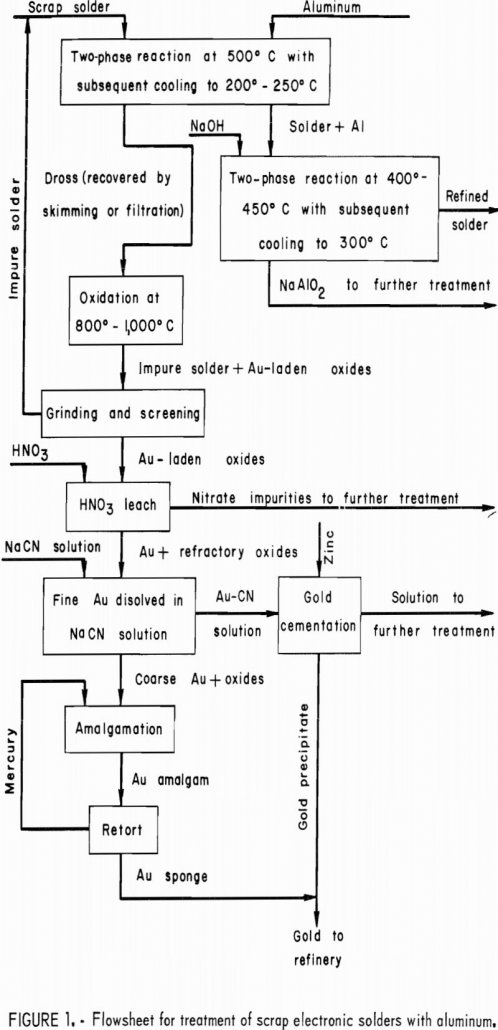
For several years, the Bureau of Mines has been actively involved in developing techniques for recovering and recycling metals and alloys from industrial scrap, including waste materials generated by the electronics industry. Among the latter materials is tin-lead solder that has become contaminated with gold and other impurities to a point where it no longer […]
Gold Amalgamator
Grinding and amalgamating are practical and satisfactory methods for treating gold-bearing concentrates or black sands or for cleaning up a mill. The gold is brightened and made more amalgamable. The tailings might be rich enough for cyaniding. Figure 137 shows an amalgamation barrel. Laboratory ball- mills and the smaller of the ball-mills (amalgam gets behind […]
Surface Tension of Solid Gold
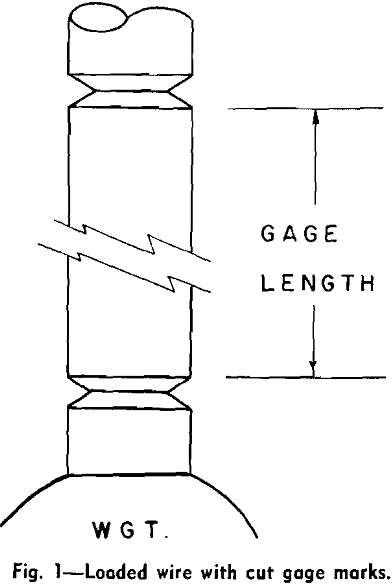
In the original Udin, Shaler, and Wulff technique for measuring the surface tension of copper, variously weighted wires were allowed to extend or contract in a copper cell held at elevated temperatures in vacuum. By plotting stress vs. strain for a wire array in one test, the stress at zero strain is obtained. This is […]
Design Merrill-Crowe Plant
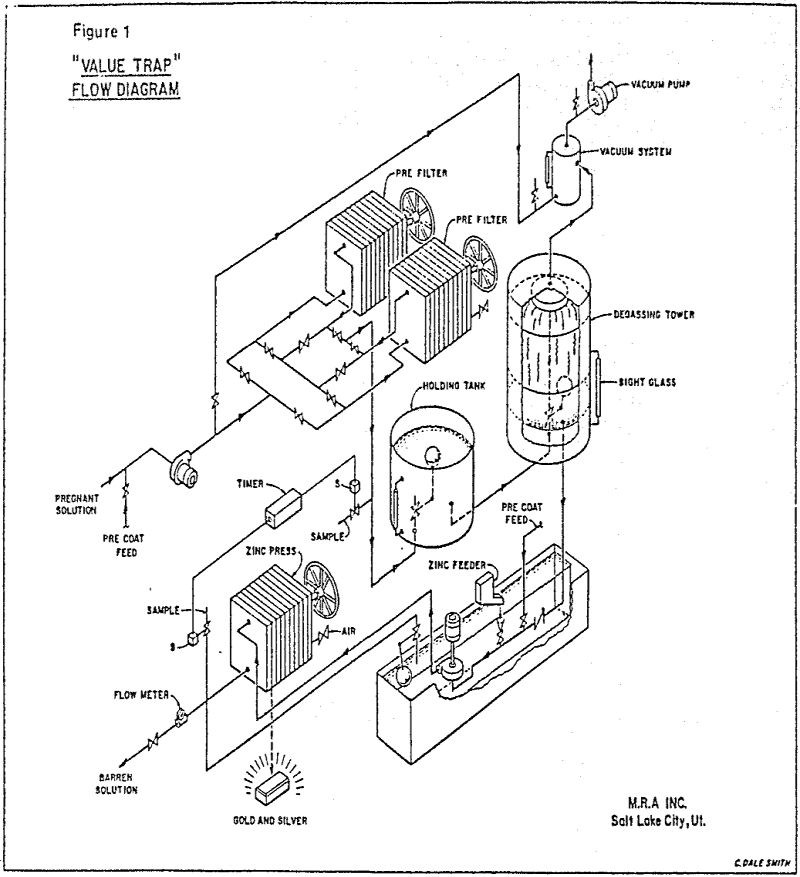
The removal of metal values from cyanide solutions, fortunately, can be done in several ways. The oldest practiced method is, cementation with zinc, or Merrill-Crowe. Clarifying Filters Today the clarifying filtration is done with every kind of filter imaginable. Most of these filters are precoated with diatomaceous earth, DE, to produce extremely clear solutions. The […]
How much Gold in Sea Water

Interest in the recovery of minerals from sea water has been stimulated in recent years by proposals for large-scale water desalination plants that would yield both fresh water and enriched brine. Extraction of selected mineral components from the brine or the sea water feed might help pay for the fresh water. Additionally, by processing sea […]
Geochemical Gold Prospecting

Gold was first discovered in Alabama in 1830. Before a decade had passed more than 20,000 people were employed in the various gold districts scattered across east-central Alabama. By 1849 most of the presently defined gold districts were known with such towns as Arbacoochee, Chulafinnee, Goldville, Pinetucky, and Idaho being the principal mining camps. The […]
Ways to Recover Gold from Cyanide Heap Leach Solutions
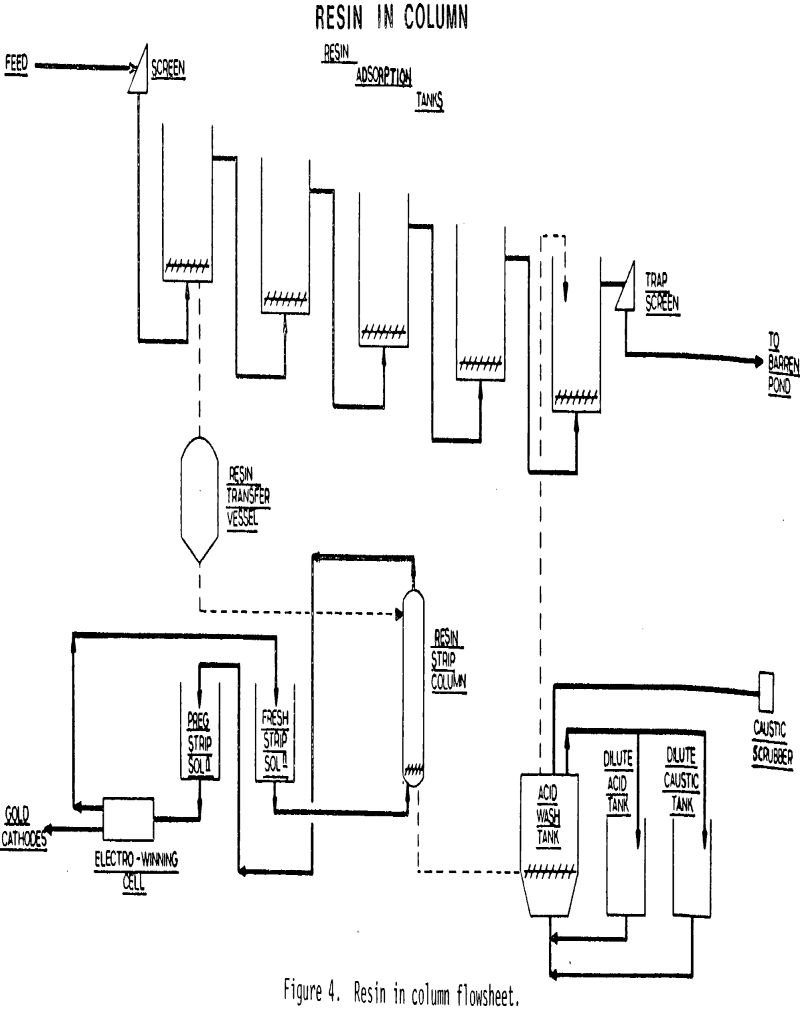
Cyanidation of gold and silver ores by conventional mining and milling techniques has been practiced for over a century. During the past decade, heap leaching has emerged as a viable process for treating certain gold and silver ores. The rapid development of heap leaching for gold and silver ores is largely a result of lower […]
Gold Project Ore Processing Plant Engineering Design

The pouring of the first dore bar on April 21, 1983, marked the conclusion of an engineering and construction project which brought about the revival of mining in Mercur Canyon, 105 km (65 miles) southwest of Salt Lake City, Utah. Previous mining activity in the canyon had ceased at the beginning of World War II, […]
Whole Ore Oxygen Roasting
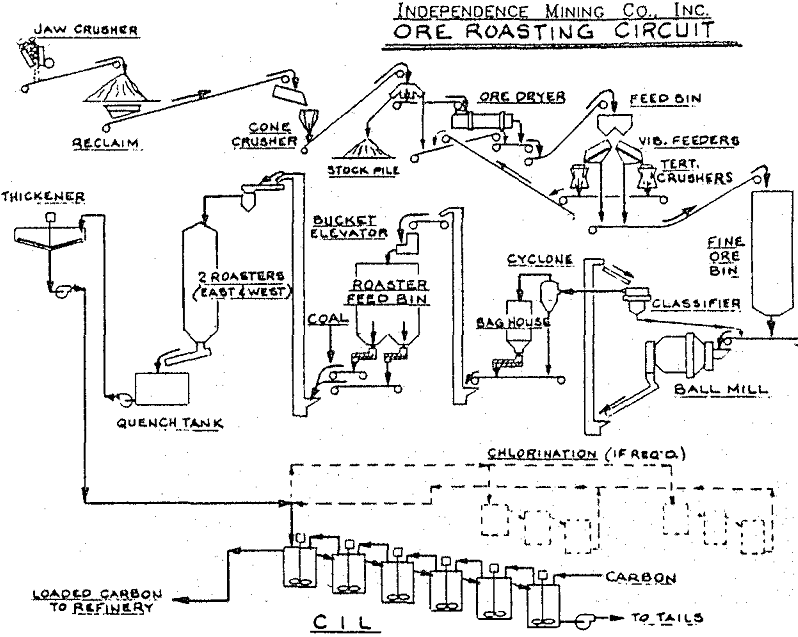
The complex geology of the ore body prevented good segregation of a pure oxide fraction in sufficient tonnages to maintain the two circuit operation. Before plant start-up, Freeport recognized that small quantities of carbonaceous ore added to the oxide circuit would produce unacceptable reductions in gold recovery. The carbonaceous ore contributed sufficient preg-robbing organic carbon […]
Cordilleran Precious Metal Deposit Exploration

Since the use of potential field methods in the search for cordilleran precious metal deposits provides information on the three- dimensional locations of intrusive margins detailed potential field data would be most useful. High quality, detailed aeromagnetics and gravity information is not generally available in the initial prospecting stage, however. Regional aeromagnetics and gravity are […]
